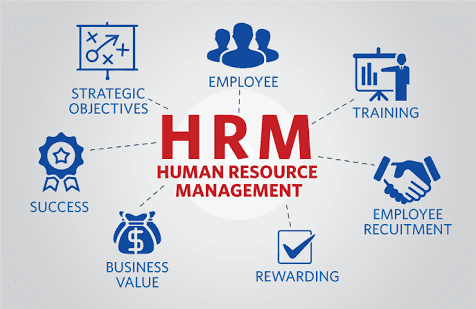
Finance & Accounts
Financial Accounting(or financial accountancy) is the field of accounting concerned with the summary, analysis and reporting of financial transactions pertaining to a business. This involves the preparation of financial statements available for public consumption. Stockholders, suppliers, banks, employees, government agencies, business owners, and other stakeholders are examples of people interested in receiving such information for decision making purposes.
Financial Accountancy is governed by both local and international accounting standards. Generally Accepted Accounting Principles(GAAP) is the standard framework of guidelines for financial accounting used in any given jurisdiction. It includes the standards, conventions and rules that accountants follow in recording and summarizing and in the preparation of financial statements.
The unit of measure in accounting shall be the base money unit of the most relevant currency. This principle also assumes the unit of measure is stable.


Human Resource
Human Resource Managers are in charge of many duties pertaining to their job. The duties include the recruitment process, posting job ads, organizing resumes and job applications, scheduling interviews and assisting in the process and ensuring background checks are carried out. Another job is payroll and benefits administration which deals with ensuring vacation and sick time are accounted for, reviewing payroll, and participating in benefits tasks, like claim resolutions, reconciling benefit statements, and approving invoices for payment. The last job is regular maintenance, this job makes sure that the current HR files and databases are up to date, maintaining employee benefits and employment status and performing payroll/benefit-related reconciliations.
Supply Chain Management
Supply Chain Management(SCM), the management of the flow of goods and services, involves the movement and storage of raw materials, of work-in-process inventory, and of finished goods from point of origin to point of consumption. Interconnected or interlinked networks, channels and node businesses combine in the provision of products and services required by end customers in a supply chain. Supply Chain Management has been defined as the “design, planning, execution, control, and monitoring of supply chain activities with the objective of creating net value, building a competitive infrastructure, leveraging worldwide logistics, synchronizing supply with demand and measuring performance globally. SCM practice draws heavily from the areas of industrial engineering, systems engineering, operations management, logistics, procurement, information technology,, and marketing and strives for an integrated approach. Marketing channels play an important role in Supply Chain Management.


Production & Quality
The push to integrate the concept of quality into the functions of the service industry takes a slightly different path from manufacturing. Where manufacturers focus on “tangible, visible, persistent issues,” many — but not all — quality aspects of the service provider’s output are intangible and fleeting. Other obstacles include management’s perceptions not aligning with customer expectations due to lack of communication and market research and the improper or lack of delivery of skill-based knowledge to personnel. Like manufacturing, customer expectations are key in the service industry, though the degree with which the service interacts with the customer definitely shapes perceived service quality. Perceptions such as being dependable, responsive, understanding, competent, and clean (which are difficult to describe tangibly) may drive service quality, somewhat in contrast to factors that drive measurement of manufacturing quality.
Software
Software is written in one or more programming languages; there are many programming languages in existence, and each has at least one implementation, each of which consists of its own set of programming tools. These tools may be relatively self-contained programs such as compilers, debuggers, interpreters, liners, and text editors, that can be combined together to accomplish a task or they may form an integrated development environment(IDE), which combines much or all of the functionality of such self-contained tools. IDEs may do this by either invoking the relevant individual tools or by re-implementing their functionality in a new way. An IDE can make it easier to do specific tasks, such as searching in files in a particular project. Many programming language implementations provide the option of using both individual tools or an IDE


Research and Development
Research and Development are very difficult to manage, since the defining feature of research is that the researchers do not know in advance exactly how to accomplish the desired result. As a result, “higher R&D spending does not guarantee more creativity, higher profit or a greater market share”
The product design and development is more often than not a crucial factor in the survival of a company. In a global industrial landscape that is changing fast, firms must continually revise their design and range of products. This is necessary as well due to the fierce competition and the evolving preferences of consumers. Without an R&D program, a firm must rely on strategic alliances, acquisitions, and networks to tap into the innovations of others.
A system driven by marketing is one that puts the customer needs first, and produces goods that are known to sell. Market research is carried out, which establishes the needs of consumers and the potential niche market of a new product. If the development is technology driven, R&D is directed toward developing products to meet the unmet needs
Sales / Business Development
The term Business Development and its actor, the business developer, have evolved into many usages and applications. Today, the applications of Business Development and the business developer or marketer tasks across industries and countries, cover everything from IT-programmers, specialized engineers, advanced marketing or key account management activities, and sales and relations development for current and prospective customers. For this reason, it has been difficult to discern the unique features of the Business Development function and whether these activities are a source of profits.
Recent systematic research on the subject has outlined the contours of an emerging Business Development function with a unique role in the innovation management process. The Business Development function seems to be more matured in high-tech, and especially the pharma and biotech, industries. Business Development is to be thought of as a marketing tactic. The objectives include branding, expansion in markets, new user acquisition, and awareness. However, the main function of Business Development is to utilize partners in selling to the right customers. Creating opportunities for value to be ongoing in the long-term is very important. To be successful in Business Development the partnership must be built on strong relationships


Medical Professional
Choosing your career is one of the most important decisions that you will ever make. When asked why they chose to pursue medicine, most physicians respond that they wanted to make a difference by helping people and positively impacting their lives through health care.
Serving others as a physician is a noble and challenging way to invest your intellect, skills, and passion in a demanding and rewarding profession.
While all types of physicians are needed to care for the health of the public, primary care physicians are crucial, especially in underserved areas. A health care system built upon an adequate supply of primary care physicians is shown to improve health outcomes and reduce costs.
Marketing & Communication
Communication is one important aspect of the marketing mix. Marketing communication is often the largest component of communication within a company, which may be to present company values, objectives or specific products and services to investors, customers or the general public. In the 21st century, communications objectives focus on more customized messages, targeting customer groups or individuals to create high responses and greater brand interaction.
As business becomes increasingly global with greater access to Internet, mobile phones and social media, new challenges exist to inform people in targeted foreign markets. Shifts in the global economy and access to new markets lead also to greater demands for product shipping and associated services. To be effective, communication strategies must converge with marketing objectives while also accounting for local languages, dialects and cultural norms.

Industrial Verticals
-
Semiconductors / Electronics
-
Engineering / Power /EPC
-
Pharma /CRO / Healthcare
-
Electricals / Switchgears
-
Banking & Financial Services
-
Construction/Infrastructure
-
Market Research / Analytics /KPO
-
Oil/Gas/Petrochemicals
-
Automobile & Ancillary
-
Advertising & Media
-
Industrial Products / Heavy Machinery
-
FMCG / Retailing
-
IT-Hardware & Networking
-
Information Technology
Our Assurance:
-
Guaranteed satisfaction.
-
Time and cost of selection reduced.
-
Customization to Client Needs.
-
Continuous process improvement.
-
Single point of contact.
-
Reassurance of long-term relationship.
-
Uncompromising Quest for Quality.
-
Quick Response time.
-
Full time support.

